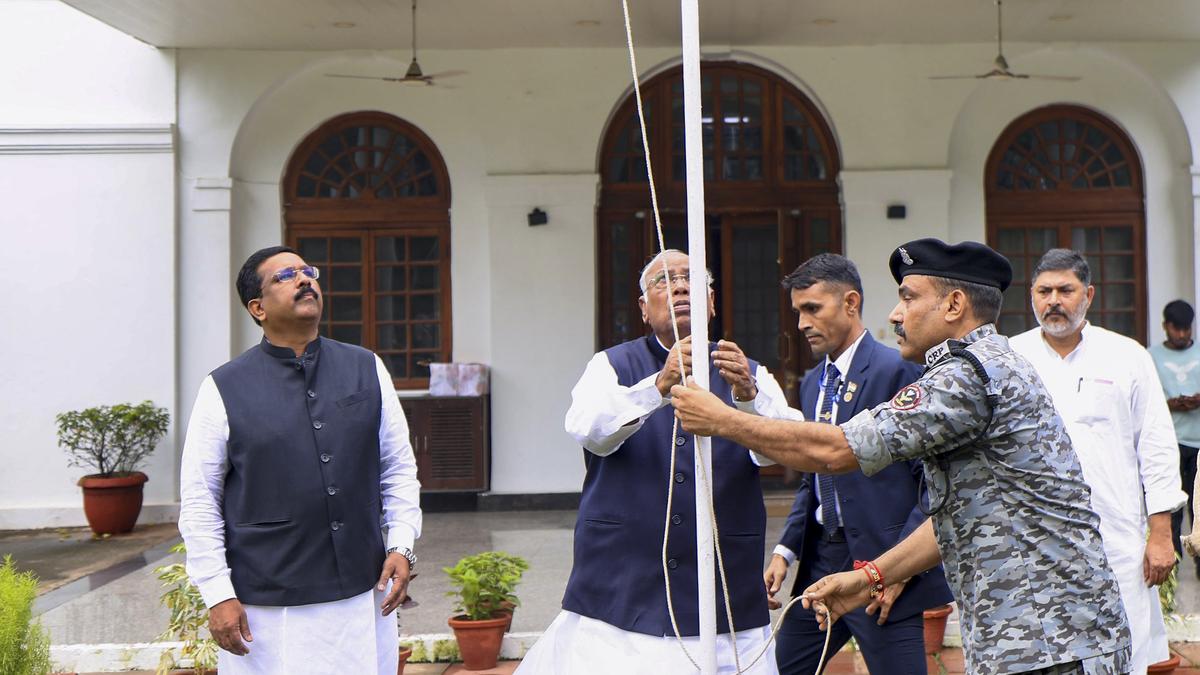Story so far: Proceeding with its plan to manage the Banke Bihari temple, the Banke Bihari Temple Trust Bill, 2025 was introduced in the Uttar Pradesh Assembly on Wednesday (August 13, 2025). The Bill allows the formation of a board of government-appointed trustees, including 11 nominated and seven ex-officio members to 150-year old Krishna temple in Mathura.
The Bill, which replaces the ordinance passed in May, allows formation of a trust called “Shri Banke Bihari Ji Mandir Nyas” to oversee the development of the temple and manage pilgrimage, religious, cultural, spiritual, and administrative aspects of the shrine. However, Sevayat Goswami priests, who currently own and manage the temple, allege that the Bill is an attempt to take over temple finances and control.
However, the Yogi Adityanath-led Uttar Pradesh government is currently entangled in legal battle over controlling the shrine. Recently, the Supreme Court, which is hearing petitions opposing the ordinance passed by the State government in May, has questioned why the Yogi government was in undue haste in promulgating the ordinance. It expressed disapproval of the “clandestine” manner employed by the State to secure the court’s permission on May 15. The court constituted an interim committee headed by a retired High Court judge, local officials and Goswamis to manage the development of the temple and the law and order situation around its premises.
Here’s a look at the history and the tussle over the Mathura temple
History of temple
Inspired by Swami Haridas’ vision of a dark-hued Lord Krishna joyously dancing in the forests of Vrindavan (Nidhivan), the Banke Bihari deity was installed by his disciple and younger brother Goswami Jagannath in late 16th century. As per tradition, the descendants of Swami Haridas - Saraswat Brahmin priests belonging to the Goswami sect, perform ‘Seva’ to the deity till date. The current temple complex was built by Goswami priests in 1862 by raising funds on their own.
As per its design, the temple has a narrow passage and a maximum capacity of 150 people. Surrounding the temple are narrow lanes (kunj galiyan) making approach to the temple tough as it attracts a crowd of 10,000 devotees per day. On festivals such as Krishna Janmashtami and Holi, the temple attracts five to ten lakh devotees – making it one of the most crowded temple in Uttar Pradesh.
State control of Banke Bihari
Faced with traffic congestion, overcrowding and inadequate infrastructure, the plan to develop the area surrounding the temple was first proposed by the Mayawati government in 2002. Earmarking ₹1.15 crore, the then-CM vowed to develop the ‘Braj circuit’, i.e. construct roads, amenities for better access to the Banke Bihari temple and others in Vrindavan.
Later in 2015, the Akhilesh Yadav-led Samajwadi government took forward the Braj circuit project to boost tourism. Roping in the World Bank, a ₹440-crore was envisaged for the Braj circuit, including ₹70 crore for repairs to Banke Bihari temple. Moreover, ₹100 crore was earmarked for rejuvenation of around 100 ‘kunds‘ (water bodies) that fall on the “parikrama” (outer circumference) , ₹10 crore for basic amenities and ₹10 crore for creating special walking tracks in old Vrindavan areas associated with the mythology of Lord Krishna and his rule.
When the BJP was elected to power in 2017, the Yogi Adityanath government took forward the proposed Rehabilitation of Banke Bihari Temple Area project. Under this project, the government aimed to widen roads in Parikrama Marg, Gautam Bara Chowk, Vidyapith Chowk and Nidhivan to provide better access, regulate vehicular movement and decongest traffic. It also involved construction of toilets, administrative offices, locker rooms, information centres, store rooms, water ATMs, open courtyards, tree plantation, children’s parks, awnings, pavements, drainage lines etc.
The temple’s management – Goswami priests, have opposed the state taking control of the temple and the area surrounding it claiming it was a ‘ploy to access its treasure’. Gaurav Goswami, 18th generation descendent of Swami Haridas, told The Hindu in 2022 that the proposed plan was opposed by Congress, BJP and even Vishwa Hindu Parishad in 2015, batting for the temple control to remain with the Goswamis.
“A corridor can be built without forming a trust for the temple. If crowd management is a concern, they can easily place barricades at various entrances to the temple, and allow a second group of devotees to enter only when the first exits,” he had said. Another priest said that the urbanisation of the area will destroy the kunj galiyan of Vrindavan which is mentioned in every Hindu scripture describing Lord Krishna’s childhood.
In face of major opposition, the plan remained only in paper during Yogi Adityanath’s first term. After being elected for a second time in March 2022, the BJP government once again revived the Braj circuit plan.
Janmashtami stampede
Tragedy struck during Janmashtami celebrations on August 19, 2022, when two devotees were killed and several other injured in a stampede as thousands of devotees turned up to attend the traditional mangalaaarti at the Banke Bihari temple.
A few days later, a Public interest litigation (PIL) was filed in the Allahabad High Court related to crowd management and poor access to the temple. However, some sevadars (volunteer) at the temple alleged the officials remained busy in making way for the VIPs and their families which led to a stampede. The state government submitted an affidavit in response to the PIL, detailing its plan to build a corridor similar to the Kashi Vishwanath Corridor (in Varanasi) around the Banke Bihari temple. For this, it proposed to form a trust in which the government will be a ‘major stakeholder’ and the temple’s funds will be used to purchase land to build the corridor.
Banke Bihari corridor
In January 2023, the Yogi government unveiled its plan to build the corridor which will cost the exchequer ₹262 crore. Spanning five acres to accommodate 10,000 devotees at a time, the corridor will provide three entry routes to the temple from Jugal Ghat, Vidyapeeth and Jadoun. With two floors, the corridor will house shops selling puja items, a 3,500 square-metre (sqm) waiting room and open area spanning 5,113 sq.m. In protest, priests and shopkeepers wrote to the Chief Minister with their blood, urging him to shelve the project. In November that year, the Allahabad HC allowed the project to proceed but declined the state’s plea to utilise temple funds for land acquisition.
Current legal tussle
In May this year, the state government passed the Banke Bihari Temple Trust which circumvented the High Court’s direction, allowing it use temple funds for the project. Filing a civil dispute, the state got the apex court’s nod to so on May 15. The two-judge SC bench of Justices Bela M Trivedi (since retired) and Satish Chandra Sharma allowed the state to utilise ₹500 crore from the temple trust fund to develop a corridor around the temple.

The ordinance was immediately challenged by the Goswami priests managing the temple and the apex court stayed its May 15 order and allowed the petitioners to challenge the ordinance in the High Court. It also stayed a provision in the Ordinance mandating the constitution of a committee or trust to manage the temple. The state has denied any plans to take over the finances of the temple away from the Goswamis.
The apex court also chided the temple management stating that inspite of receiving donations running into hundreds of crores, no tangible steps were taken by the temple management to better facilities for visitors. It observed that the Goswami priests themselves remain divided in factions and continue to litigate before civil courts, leading to administrative inaction. Assuring all stakeholders (including rival factions) of responsible management of the temple and development of adjoining areas, the SC has formed an interim committee to run the temple. With the Bill, replacing the ordinance now likely to be passed by the government, the tussle over the Banke Bihari temple and its ‘treasure’ is likely to drag on.



.png)
.png)
.png)
















 1 hour ago
3
1 hour ago
3









 English (US) ·
English (US) ·